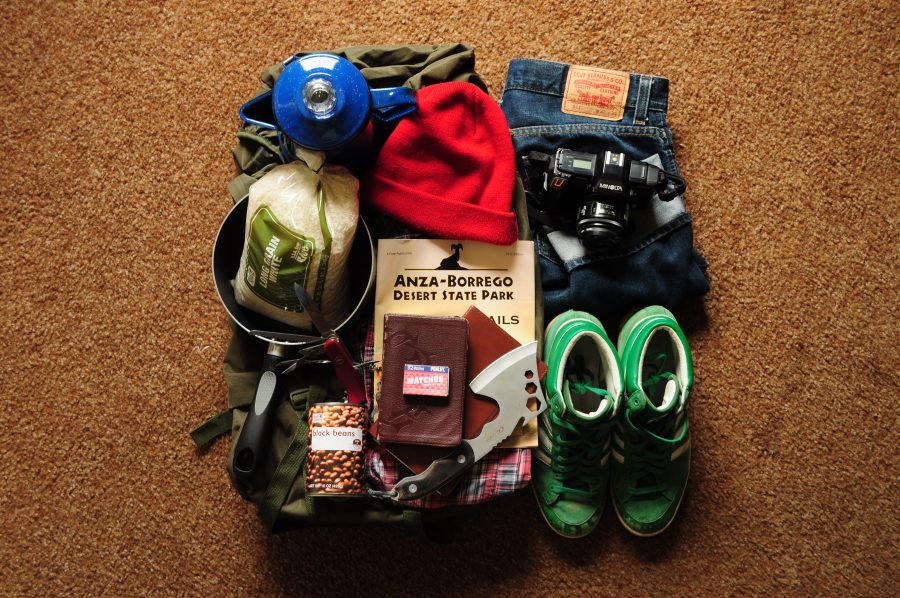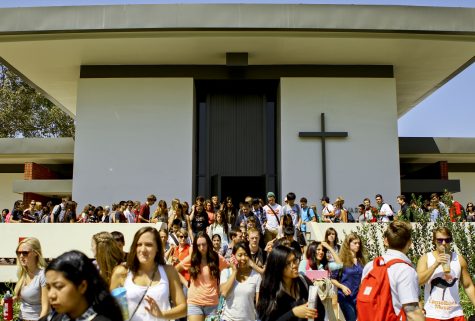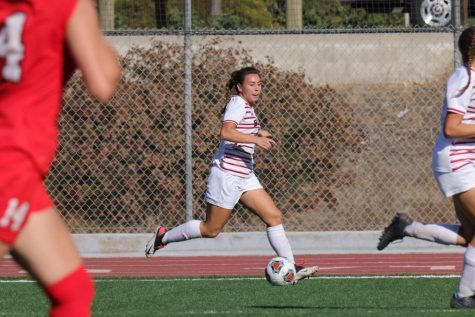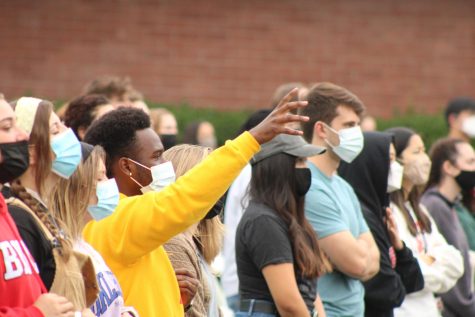Exploring space and silence at Anza-Borrego Desert State Park
Ethan Froelich explores the sanctity of the California deserts.
March 22, 2013
Hazel, the name of the Toyota Camry I am riding in, smoothly crests green pastures an hour and a half southeast of La Mirada. Senior intercultural studies major Justin Humble sits at the wheel, with alumnus Jon Goossen (‘12) riding shotgun. Yet, as we summit the northern side of the mountains outside the town of Borrego Springs, Calif., the green grass is replaced by brown, rocky soil. We have begun our descent into the desert.
Historically, deserts are places where early explorers of North America met their end. Today, people seem to avoid them entirely for another far worse consequence: They have no cell phone reception.
But what deserts do not have is actually what makes them so valuable. A desert has no noise: It contains the ever-elusive silence. It has nearly no outside light pollution; it has a clear view of the stars. Deserts are great in moderation, especially when you need a place to relax, rewind and get away from a school that is getting increasingly crowded. There are the commonly visited venues of Joshua Tree National Park or the Mojave Desert, but there is another desert that I had never visited, and was dying to explore: Anza-Borrego Desert State Park.
The Borrego Badlands rest in the Southeastern corner of California. | Ethan Froelich/THE CHIMES
Where to Start
Mary, a senior citizen volunteer, explained the wonders of the park to us. The visitor center of Anza-Borrego Desert State Park is the first place any visitor should go, as with any state or national park you visit. The park rangers and volunteers love their jobs and actually experience all the sights of the park first-hand, making them the best givers of advice. So we listened to Mary.
While much of Anza-Borrego is not passable for two-wheel drive cars, most of the main, interesting attractions are. Mary highlighted a few sights to see, including the Borrego Palm Canyon, close by to the visitor center; Alcoholic Pass, to the north; and the badlands to the southeast. The badlands sit on the eastern edge of Anza-Borrego and contain slot canyons — small canyons whose walls are very close together and are carved ever-so-slowly by intermittent rains.
Due to the fact that flash floods can come through the slot canyon with any rain and there are rocky overhangs in which potential “127 Hour” situations could occur any moment, camping in the slot canyons should probably be avoided.
We decided the slot canyons would be perfect for the night.
Anza-Borrego is rare in that it allows for camping just about anywhere. The rules are short, and only include the following: Do not park any more than one car-length off the road. Do not park on existing vegetation. You must provide your own wood and metal container to contain the ashes from your fire. Borrego Springs is anal about this last rule. So bring some scrap metal or something to keep the ashes off the ground, and a bag to contain them once you are ready to leave the site.
Alcoholic Pass and Borrego Palm Canyon Hike
After a meal of refried beans, tortillas, salsa and more beans for dinner, we sickly settled in for the night.
Awaking after sleeping for 11 hours without getting killed by rocks or flash floods, we were ready for a good hike. Following Mary’s suggestion, we headed to Borrego Palm Canyon.
The palm grove hike is the best part of the park. A three-mile round-trip hike, the Borrego Palm Canyon hike’s entrance is at the parking lot, where you are asked to pay $8, but there is little enforcement — no, I am not suggesting you drive on by where you are supposed to pay. Yes, I am.
The hike starts out on flat ground with a sandy path winding toward the mountains with massive, dead palm trees marking the trail. Soon the ground becomes rockier, then it begins to climb, and a river trickles beside you as the hike progresses. At the end, there is a grouping of perhaps 20 palms close together. Frogs call out to one another, long grasses flank the river and wildflowers are slowly blooming; it’s a desert mountain oasis.
I recommend that you go slightly farther up the canyon after the palm grove, where it is slightly tougher to traverse, but offers streams of mountain water-runoff that collect in pools: perfect for a tired hiker.
The other hike that we were informed of was Alcoholic Pass, which is a two-mile round-trip hike and contains a rather hilarious guestbook at the end of the hike. One entry reads: “Great hike, too bad we ate Mexican last night.” Other than the guestbook, the hike is not too exciting.
Borrego Springs and the Unexpected
The town of Borrego Springs was the biggest surprise. Throughout its boulevards flanked by citrus groves of grapefruit, lemons and oranges, there are incredible works of art. Crafted out of metal by Ricardo Breceda, more than 129 sculptures in Borrego Springs on land given to the project by Dennis S. Avery, who recently passed away. The sculptures range from a farmer tending a vineyard to an imposing serpent emerging from the sand.
Another highlight was the wildflowers that were beginning to bloom, and the blooms of several varieties of cactus. The park even has a wildflower hotline which one can call to see if the wildflowers are in full bloom yet, an event that generally occurs in March or April.
Yet, the most surprising part of the trip came during our departure. As Hazel crested the mountains on the northwest corner of Anza-Borrego, a bighorn sheep leapt into the road, a hundred feet in front of our car. Sizing up the cliff to its left, it jumped. Running to the edge of the road, we looked at the steep grade below. As if nothing extraordinary had happened, the sheep trundled along down a treacherous, barren and unforgiving landscape — surviving another day in this quiet, desert wilderness.
To see all my photos from the trip, look up the hashtag: #anzaborregoethan on Instagram.










